
A visit to this museum might just change your attitude towards snakes!
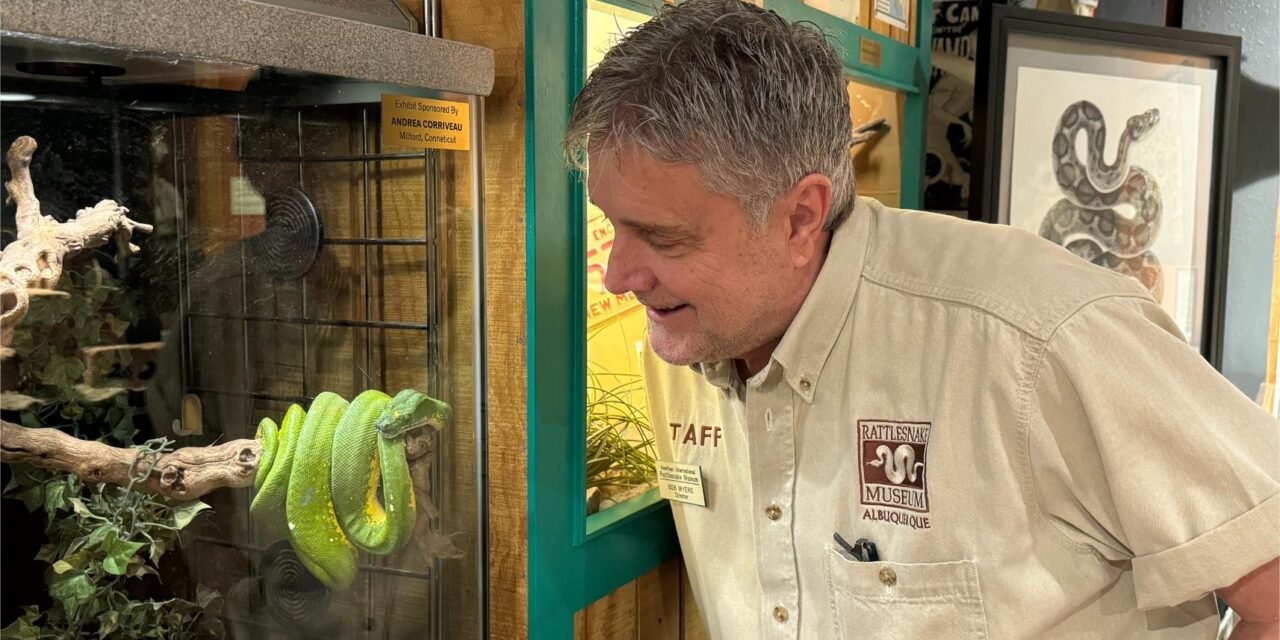
I don’t like snakes. Never have, never will. So, you might wonder what I was doing standing in The American International Rattlesnake Museum in Albuquerque surrounded by dozens of slithering creatures of all sizes and colors. It was mainly curiosity that drove me. I had read about this place for a number of years (it recently was voted Best Museum in Albuquerque for 2023 by Albuquerque The Magazine) and the fact that there’s nothing else like it in the country were enough reasons to motivate my visit. And though I am not a fan of these reptiles, I am oddly fascinated by them – as long as they are behind glass enclosures!
Museum owner Bob Myers welcomes visitors, especially those who are afraid of snakes. He knows that many people are drawn to these and other reptiles, even if they are scared of them. This fear, he notes, often comes from a lack of education, along with their depiction in movies and TV shows as evil and dangerous creatures. “The museum’s goal is to educate,” says Myers, “and with this knowledge, the hope is that people will understand snakes and their behavior better. A little education can go a long way.”
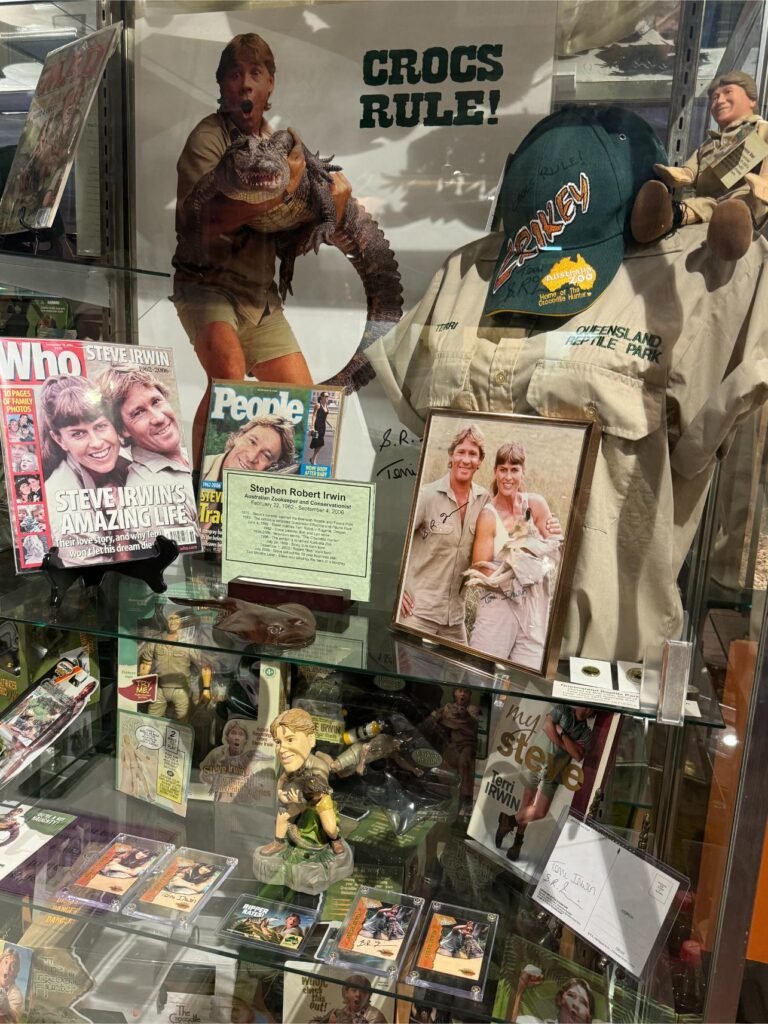
A memorial to Steve Irwin collection

Another collection features reptilian postmarks from towns named after reptiles and amphibians

AJ, an Eastern Diamondback
According to Myers, snakes want to avoid us and their first line of defense is to be still and quiet. They don’t want to attract attention to themselves. However, when approached, they can get defensive. Most of the time, people don’t realize how close they are to one of these creatures. You might be hiking in the woods, for example, and there’s one right off the trail, but you don’t see it because it’s camouflaged amid the rocks and leaves. And it’s not making a sound because it wants to remain hidden.
Myers, who has spent much of his life in New Mexico, has always been interested in snakes. He studied, caught and owned many reptiles as a boy. “My father would joke that I had the reptile gene in the family,” comments Myers. Before opening the museum 33 years ago in Albuquerque’s Old Town, he was a high school biology teacher in Florida. He retired from that position at the ripe old age of 27, moved back to Albuquerque and thought he might want to work in a museum. After volunteering at the zoo for a while, he decided to open his own museum. “The whole thing just evolved,” he explains, “and I had no business background, which meant I had to learn everything as I went along.”
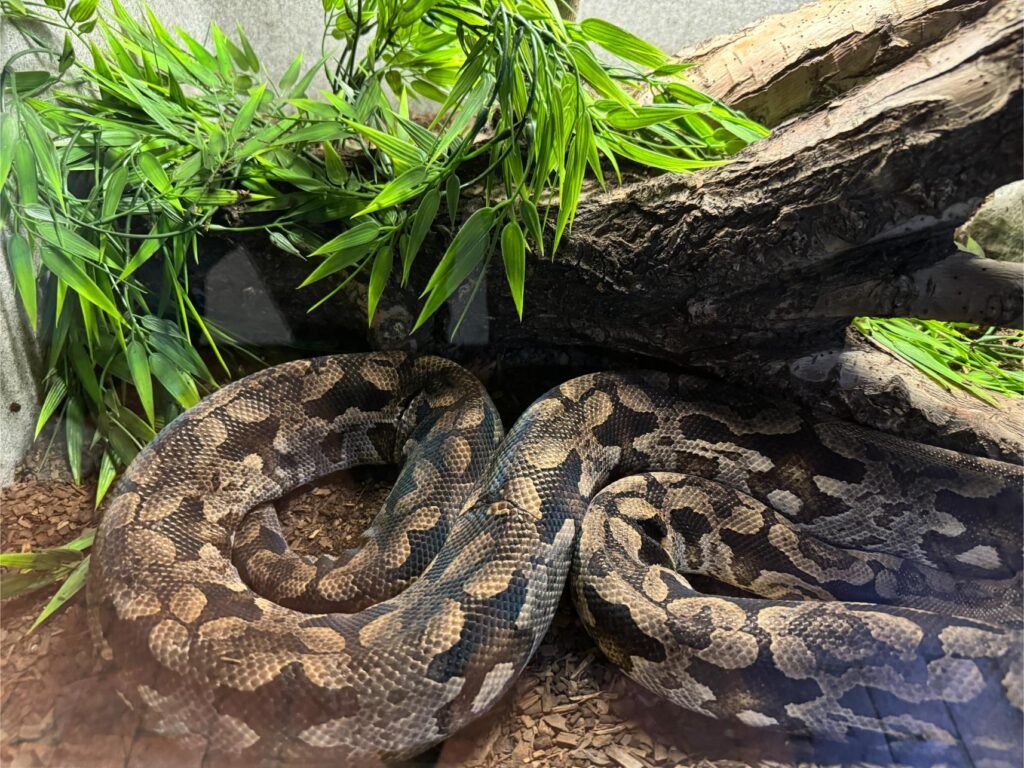
Boa
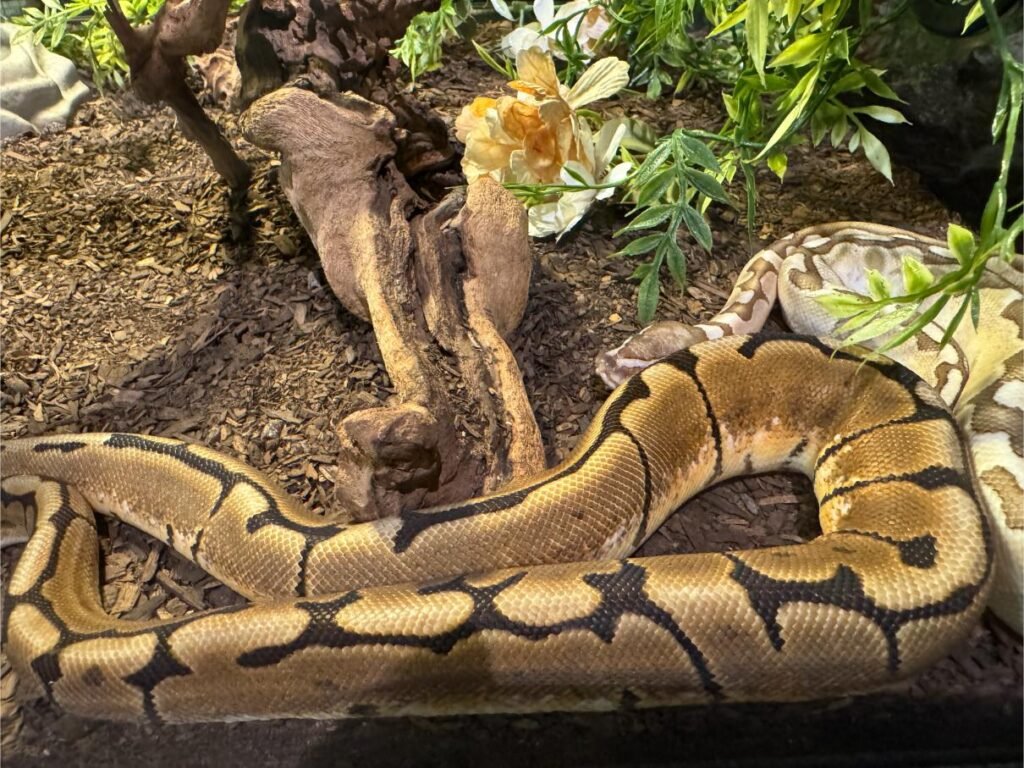
Ball pythons
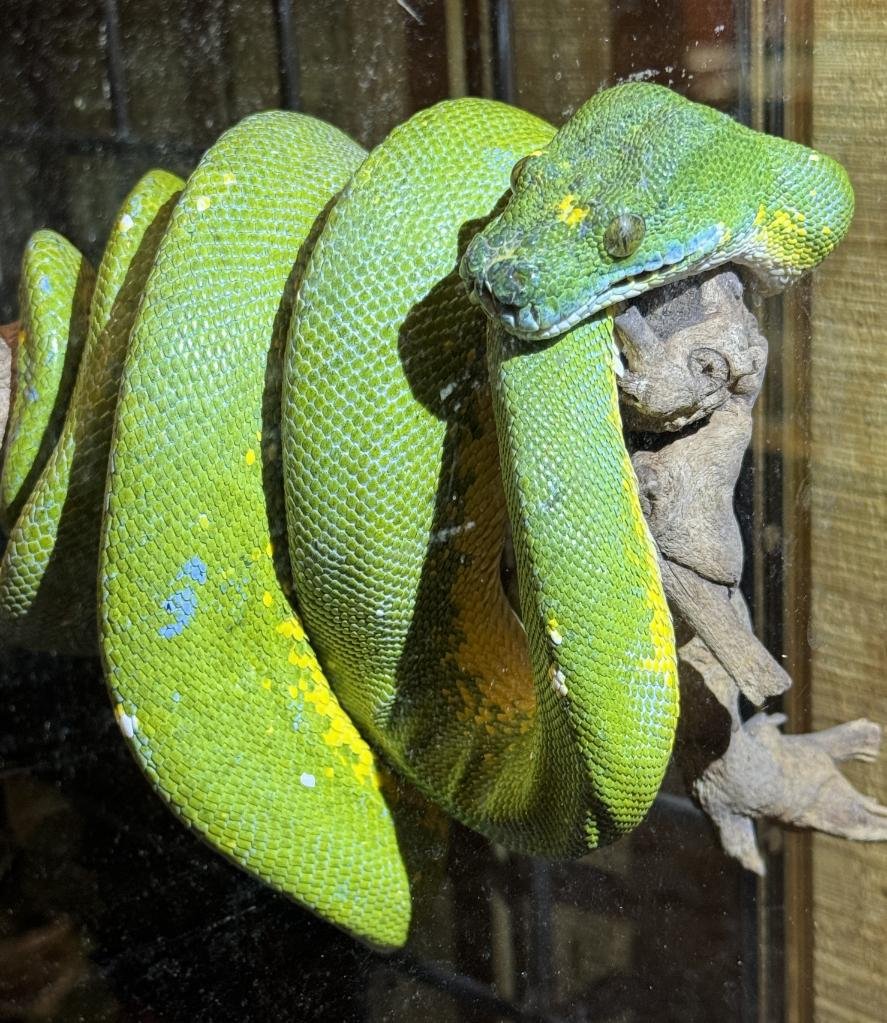
Colorful green tree python

Sign outside museum
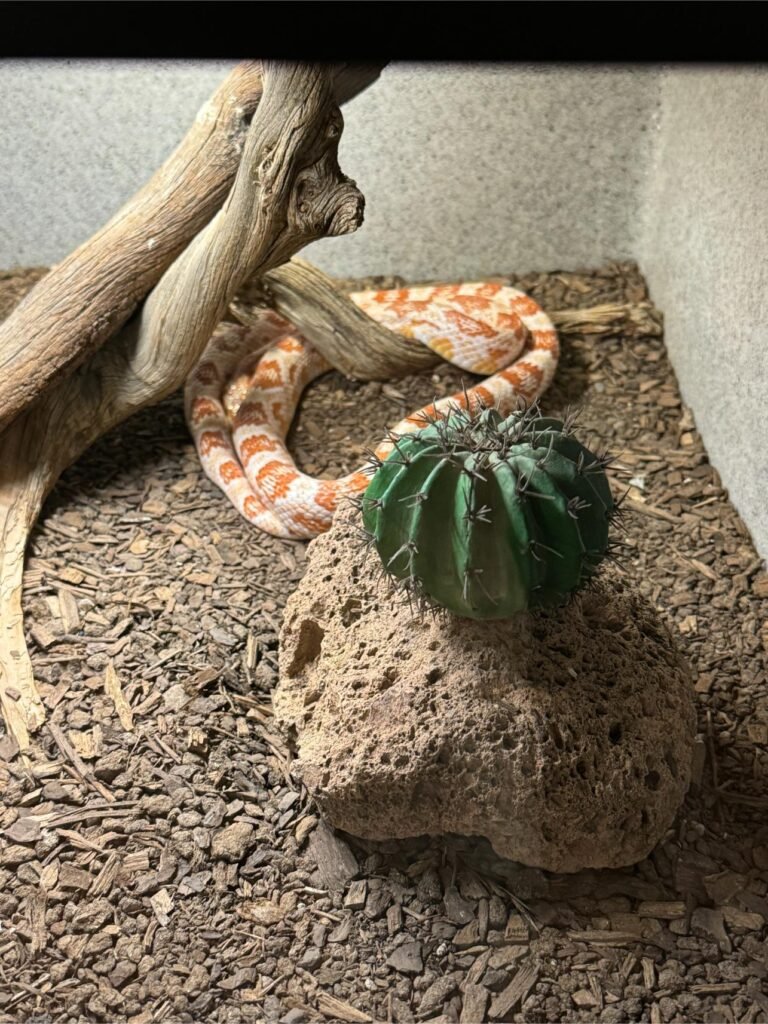
There are snakes of all sizes and colors
Today, the museum attracts 50,000 to 60,000 people a year, about a third of whom are from New Mexico. There are about 34 different rattlesnake species, with about 65 snakes and some other reptiles on display. An equal number is housed offsite. Most of the creatures come from zoos, private breeders or private individuals.
Among the crawling, slithering critters visitors can see in the museum is AJ, a six-foot-plus, ten pound Eastern diamondback, who has been at the museum for 27 years. In the wild, AJ would probably only live a year, but in captivity this number can go as high as thirty years. Along with AJ, there are bull snakes, pythons, boas, kingsnakes, copperheads, desert and prairie rattlesnakes and more. As for other reptiles, you’ll find lizards, a tarantula, scorpion, turtles and tortoises. Georgie is one of the tortoises and he’s a big guy, about 25 years old. He has the privilege of being able to freely roam the walkways of the museum.
Myers will gladly talk about any of his creatures, as they each have a story. You can also learn about them via text boxes, information sheets, documentaries running on the museum’s various TV sets, and my favorite – an on-the-wall quiz that tests your knowledge of rattlesnakes. So much of what we think we know about rattlesnakes is incorrect and the quiz (with its corresponding answer sheet), dispels the many erroneous myths we’ve come to believe, such as: You can tell how old a rattlesnake is by the number of rattling components on its body; rattlesnakes are one of the most aggressive animals in the world; rattlesnakes bites are fatal; rattlesnakes always inject venom when they bite; the best thing to do when you see a snake is to turn and run; and rattlesnakes are found in four different U.S. states.
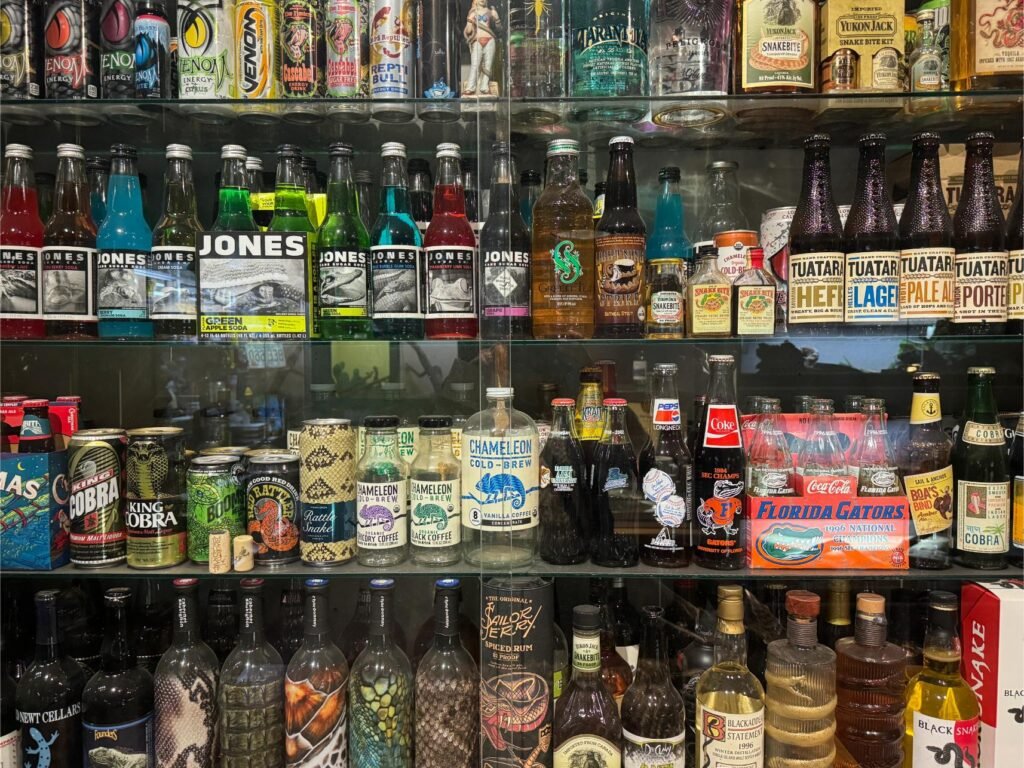
Bottle collection
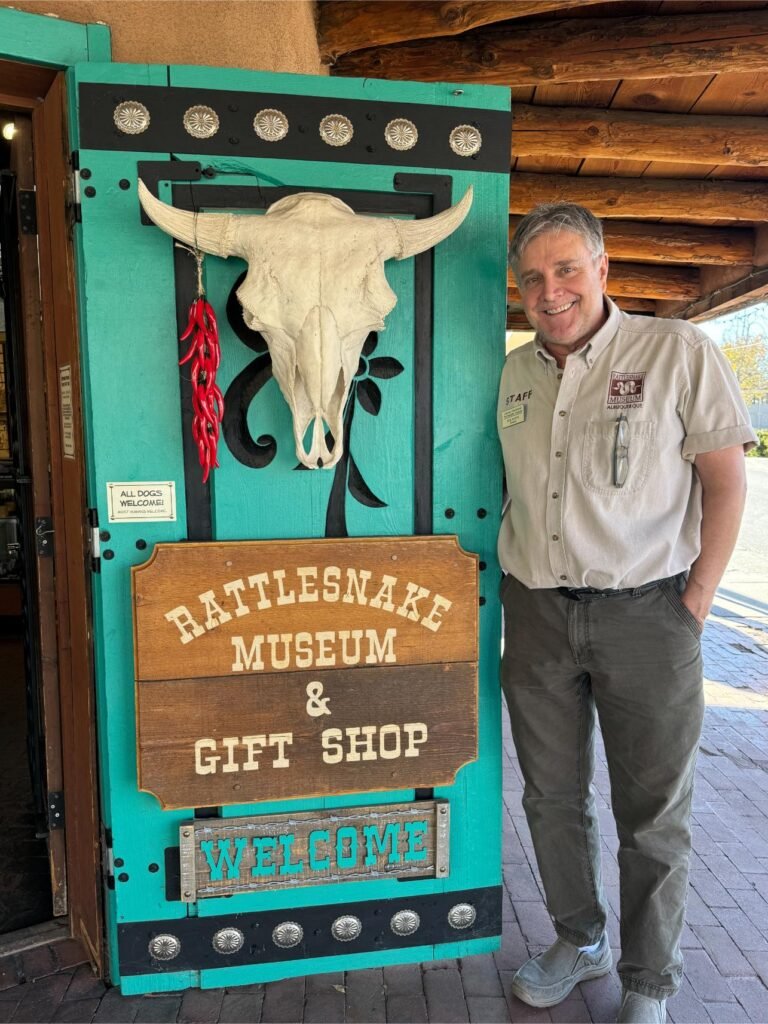
Bob Myers welcomes visitors to his Rattlesnake Museum in Albuquerque
Rattlesnakes shed their skin two to four times a year and gain a new segment on their rattle each time. When segments get old and brittle, they break off, so no, you can’t tell how old one of these creatures is by the number of their rattling components. There are plenty of other animals in the world that are more aggressive than rattlesnakes, like the hippo, bull shark, polar bear and buffalo. Also, less than one percent of rattlesnake bites are fatal. And a third of all bites contain no venom. Additionally, rattlesnakes are found in all but four states in the country: Hawaii, Alaska, Maine and Delaware. Most importantly, don’t panic when you see one of these guys or gals. You aren’t their food. Stand back about ten feet and quietly observe them…or simply walk away.
As for their food, the snakes in the museum eat rodents, just like their wild counterparts. However, the mice and rats that the museum receive are all frozen, then thawed and dried before setting them in the cages. The snakes don’t require live food. Live or dead, it’s all the same to them. The young snakes get fed once a week, while the older ones are on a biweekly schedule.
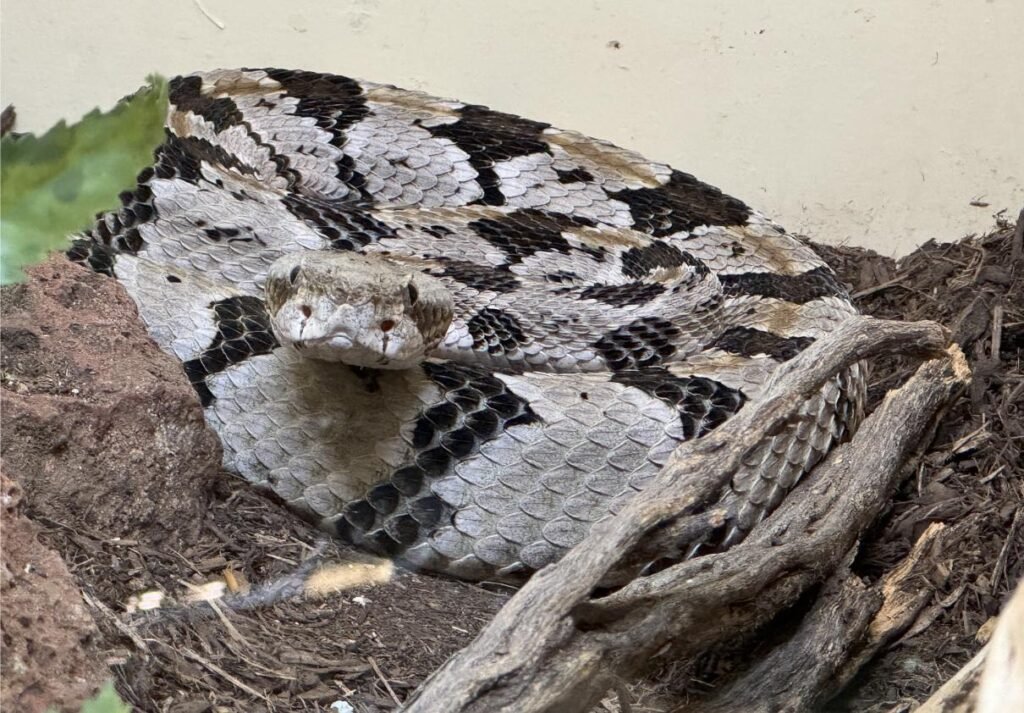
Go eye-to-eye with rattlesnakes at the museum
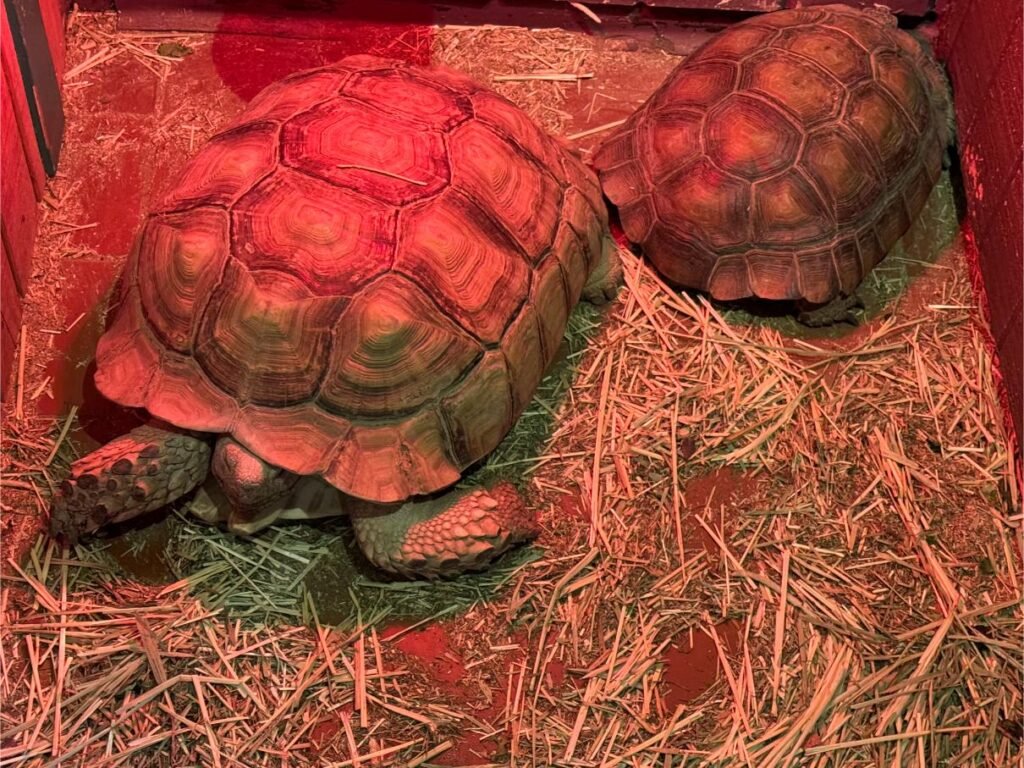
Georgie and friend

Copperhead

Piebald patterned ball python
I was amazed, not only at the number and variety of creatures in the museum, but also at the numerous artifacts and collections on display. Myers admits he is a big collector – of many things, especially anything related to snakes. A collection of serpentine glassware and poison glasses sits in one case, while reptilian postmarks from towns with reptile and amphibian-related names are showcased in another. Then there’s an entire memorial exhibit dedicated to Steve Irwin, the famed Australian zookeeper, conservationist and TV personality, who was killed by a stingray while filming in the Great Barrier Reef back in 2006.
Other reptile-related collections feature a set of vanity license plates, a large display of commercial drink bottles and one of Hopi katsina figures. There’s also a case featuring all things bees – from books and cards to cereal boxes and even energy bars. A sign notes that bees and wasps were shown to be a greater health risk than snakebites. More people end up hospitalized or die due to bee and wasp venom than snakebites.
I went to this museum with a negative attitude towards snakes. I left with an enhanced knowledge base and a change in perspective about them. And although I’ll never truly like them, I do have a newfound respect for them. They have their place in nature and help the environment significantly. As important predators, they eat rodents. Without them, the world would be infested with crop-eating and disease-carrying creatures.
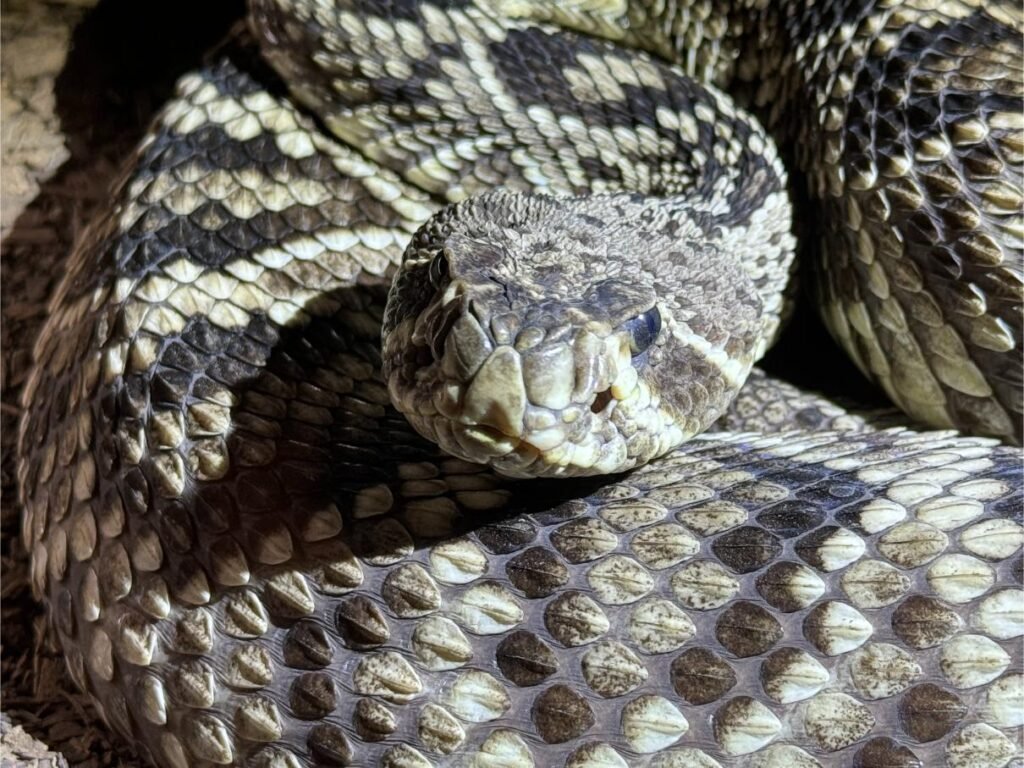
Up close and personal
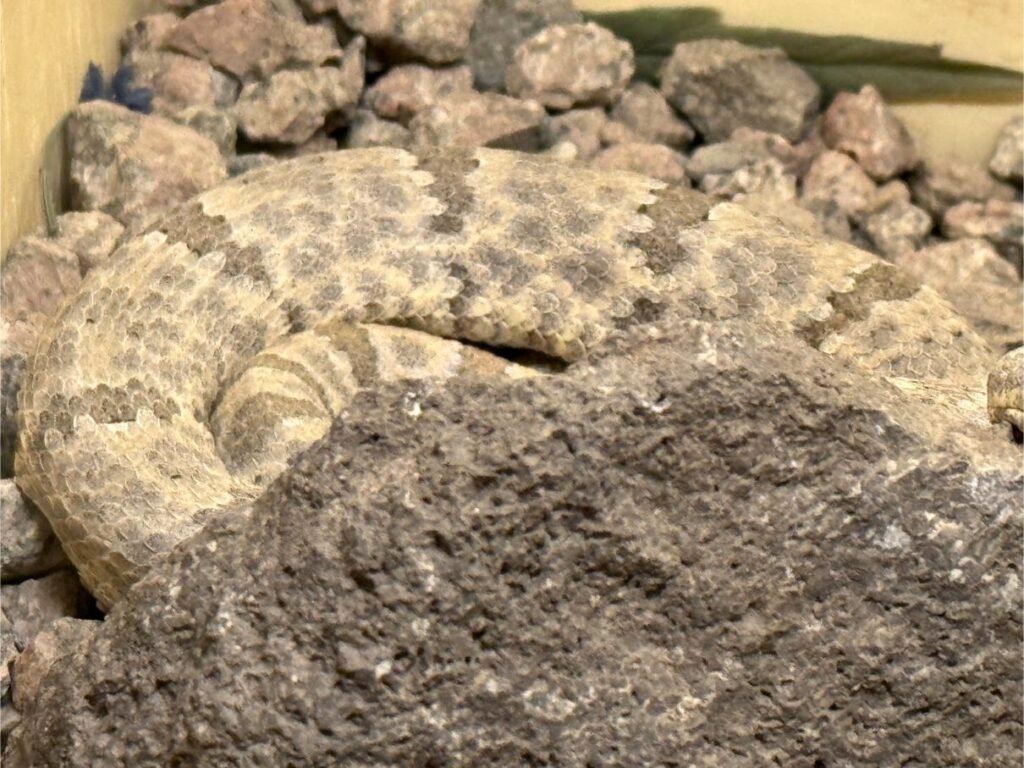
They can camoflauge themselves well
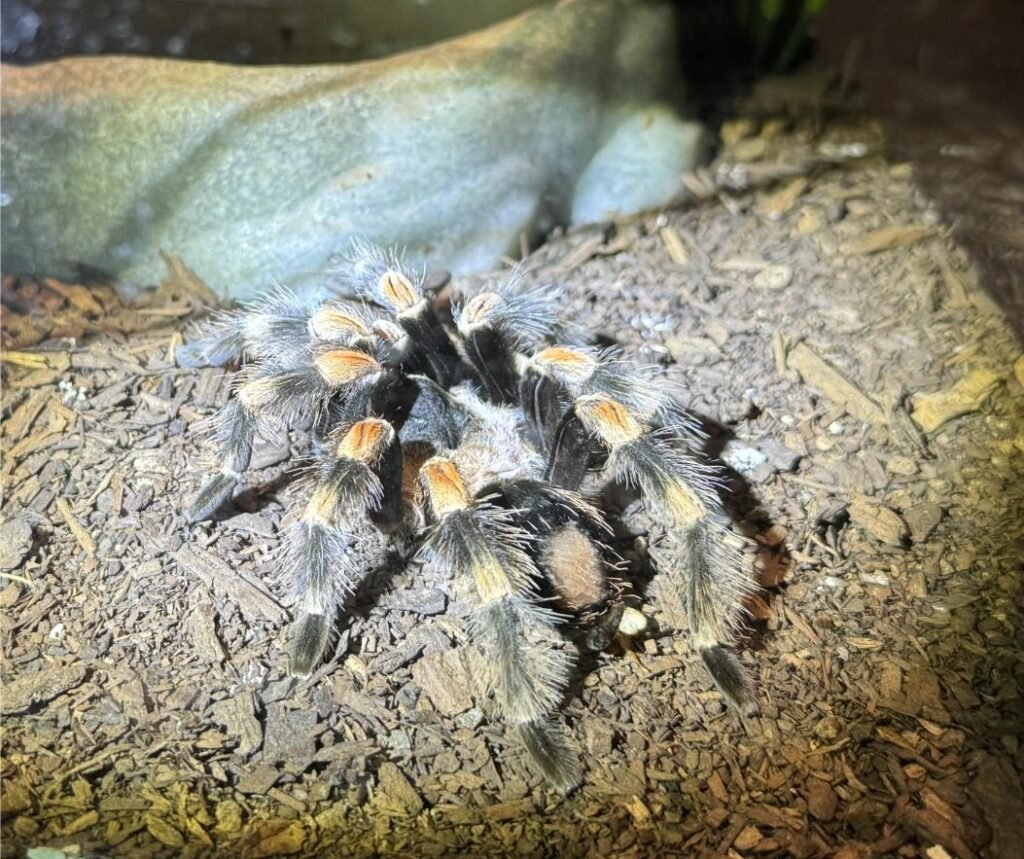
Tarantula












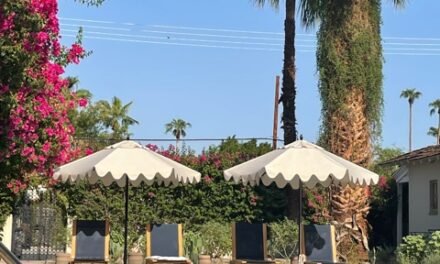
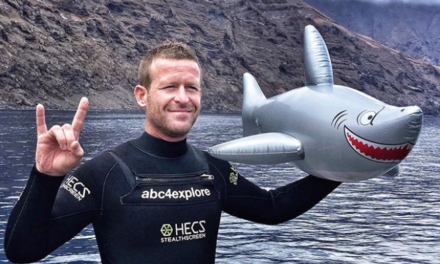
![Ideal Brunch Cocktails with NÜTRL Canned Vodka Seltzer [COCKTAIL TIME]](https://luxebeatmag.com/wp-content/uploads/2021/10/NUTRL-Canned-Vodka-Seltzer-Copyright-2021-Sherrie-Wilkolaski-Luxe-Baet-Magazine-6-440x264.jpg)




















